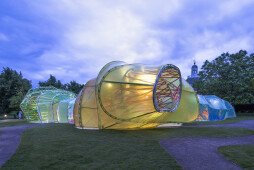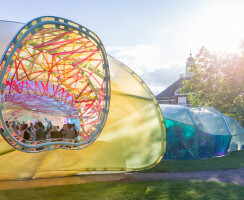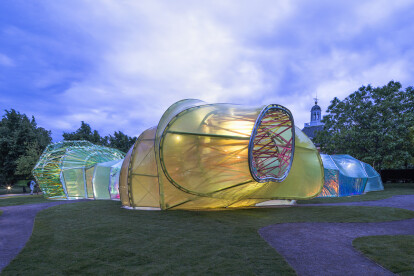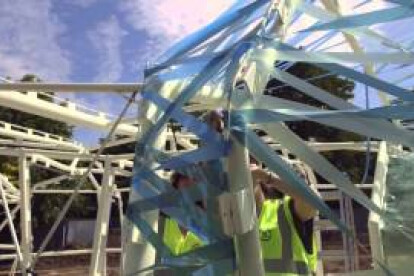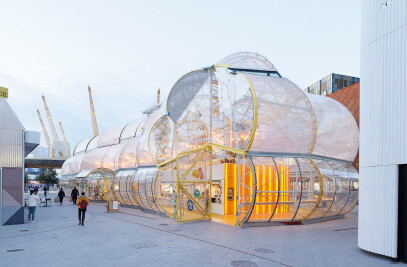“I resolved that the structural and technical dimensions of design must never divorce human life from nature”. - Nature Near, the late essays of Richard Neutra. ( Capra press,1989), Richard Neutra. Edited by William Marlin.
As soon as Julia Peyton-Jones and Hans Ulrich Obrist mentioned us the possibility to design the Serpentine Pavilion, we began to think about the main features that the structure needed to provide and the material that had to define it. Starting with something simple – that this Pavilion was to be built in a Royal Park in London – we asked: what are the local materials that represent London? Which material should be used in a Royal Park? Almost straight away, using this situation and mixing it with more personal interests, we decided that the pavilion would be entirely made of a single material, and transparency would be its motto. We therefore presented a pavilion only made of Plexiglas.
But just as quickly as it came, it went. That first idea collapsed on account of the local regulations, especially the strict fire safety standards, which totally demolished the option of the chosen material. At that instant we woke up, opened our eyes and realized that we were in the same place as ever, doing the same thing as ever, just architecture, real architecture, where there are thousands of restrictions and, as usual at the end of every project, those restrictions are ultimately its real definers.
We were also very much aware that we were working on the pavilion's 15th anniversary, the celebration of what is known as a “crystal” anniversary, and it had to be —without resembling anyone— a kind of tribute to them all, a sort of homage to all the stories told in those architectures.
So we then decided to use all the more strictly architectural tricks —or tools if you wish— that can be handled to accentuate the only concept that we finally wanted to use: pure experience. As a single encompassing concept, we sought a way to experience architecture through its most common, simple elements: structure, light, transparency, shadows, lightness, form, sensitivity, change, surprise, materials, materials, materials ...
And, stumbling along as usual, we finally arrived at this object, the sum of many, this strange pavilion, the sum of many. It partly attracts us, but for the most part makes us restless and intrigued, because it is probably the project with the strongest personality and life of any of the ones we have done so far. That's why we are trying to describe it from a distance, without hiding the many doubts that will only be resolved when we can go in and visit it, like any other visitor. Because in fact it's just that, a question of trying to provide a different experience to all the visitors who go through, something they have never experienced previously in any other building, but at the same time it is also something that encompasses each and every one of the experiences that others have had previously.
Although our secret hope is that those memories are above all about things that were related to something called nature. Because we have never overlooked the fact that we are in a park, Kensington Gardens, and we think this object could be part, at the same time, of the nature that grows there and of the nature is lacking there.

